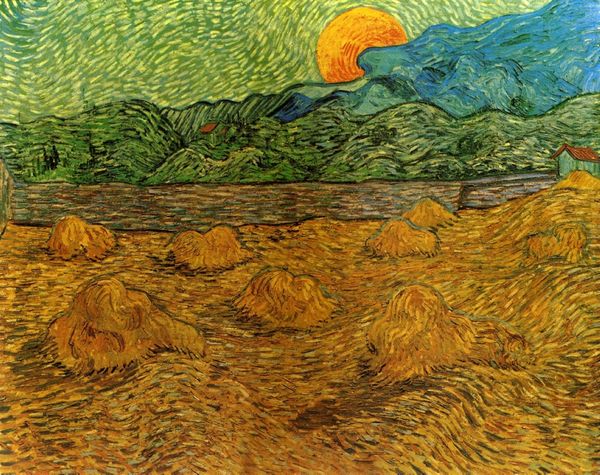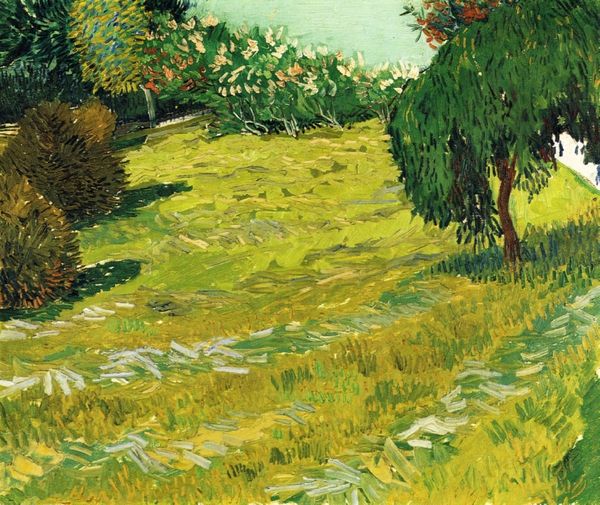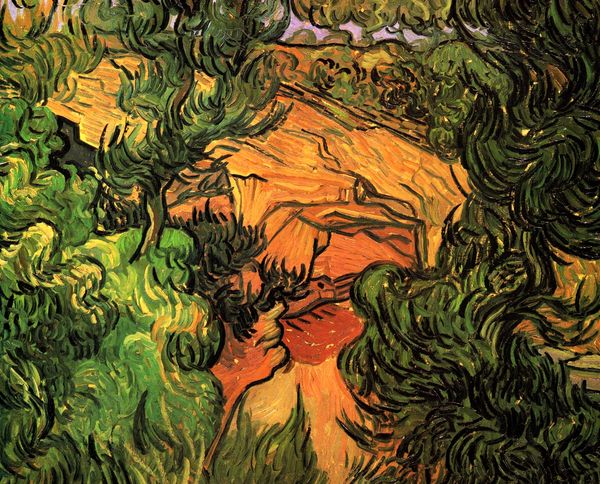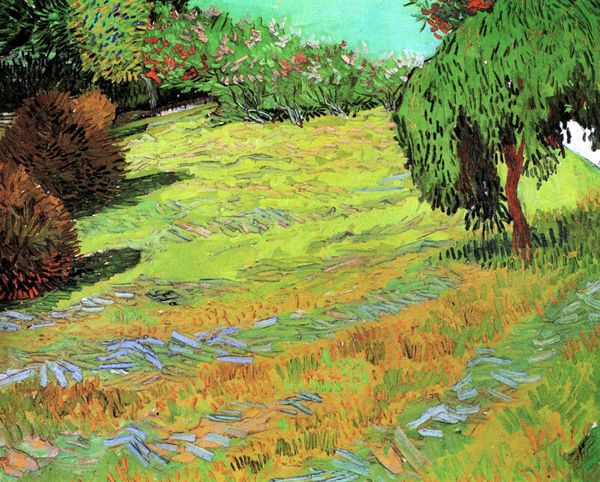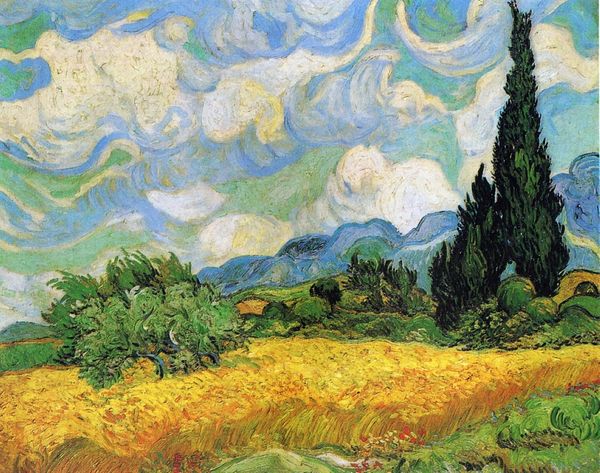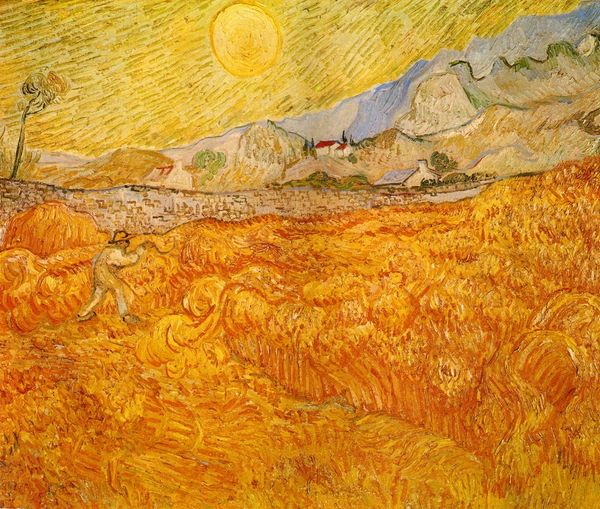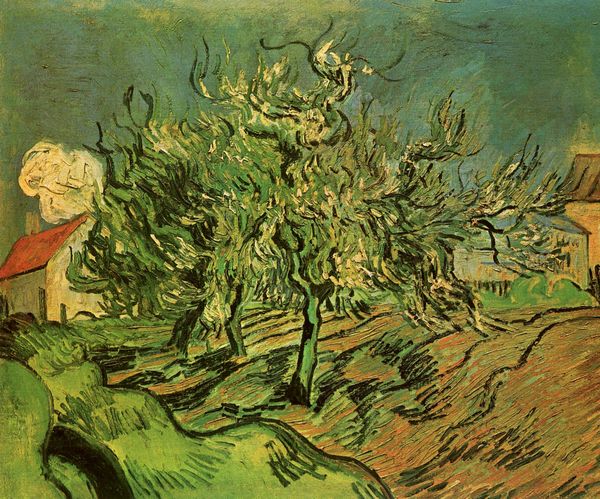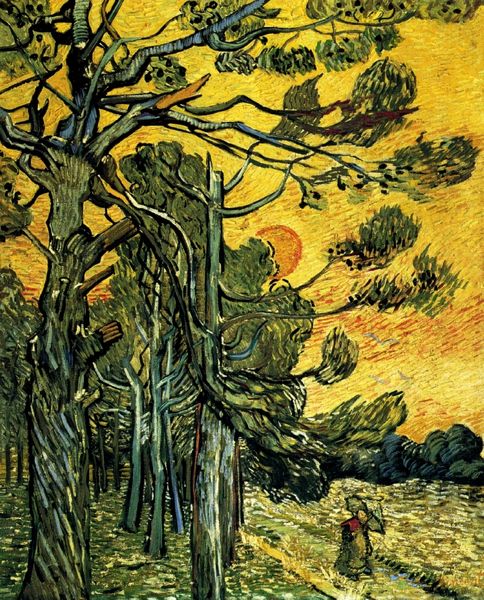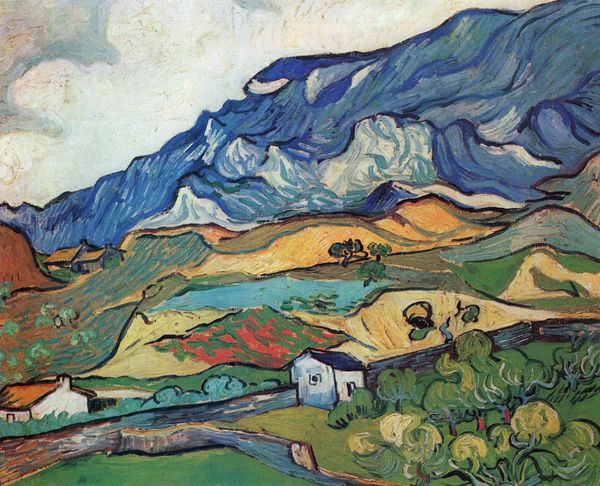
Dimensions: 72 x 92 cm
Copyright: Public domain
Editor: We're looking at Vincent van Gogh's "Field of Spring Wheat at Sunrise," painted in 1889. The impasto is so thick; it feels almost sculptural. I'm immediately drawn to how vibrant and almost restless the landscape appears. What's your perspective on this work? Curator: I see this painting as a potent expression of the artist's deeply intertwined relationship with the natural world and the societal constraints placed upon him. Van Gogh was, in many ways, an outsider. His identification with the working classes and rural life, alongside his own personal struggles with mental health, shaped his artistic vision. Consider the thick brushstrokes—aren't they indicative of not just the physicality of the wheat, but also the labor involved in cultivating it? Editor: Definitely. The brushstrokes are so active. So you're saying his outsider status actually informed the intensity we see in his landscapes? Curator: Precisely. It is not simply a pretty picture; it is about the politics of looking and seeing. Van Gogh’s perspective deviates from academic conventions. Furthermore, note that this was painted while he was institutionalized, adding a layer of confinement and perhaps resistance. Editor: I never thought about his institutionalization playing a role. How do you think his style pushed against existing social and art norms? Curator: He used color not representationally but emotionally, rejecting the established academic painting’s formal requirements. In many ways, the wheat field becomes a symbol of resistance, an untamed space at odds with the order society seeks to impose. This reminds me of Foucault’s concepts of power, discourse, and resistance. Does it suggest anything to you? Editor: That makes perfect sense. The wheat field almost becomes a character rebelling against a structured society. Curator: Yes, it can be regarded as his active rebellion! It has a certain unyielding intensity which reflects his lived experience of oppression. Editor: I'll never see this the same way again. I'm struck by how a landscape painting can engage with such heavy issues. Curator: Exactly. Art gives voice to resistance.
Comments
No comments
Be the first to comment and join the conversation on the ultimate creative platform.



